by Amineddoleh & Associates LLC | Mar 23, 2024 |
In a highly-public withdrawal, Christie’s pulled four ancient Greek vases from auction. The four antiquities ranged in value from $7,000 to $30,000. It appears that the vases are the product of illicit dealings. They have been traced to the notorious antiquities trafficker Gianfranco Becchina.

One of the four disputed vases pulled from auction. Image via Christie’s.
Vases Traced to Notorious Dealer
Becchina, a well-known middleman in a looting network who was convicted for his actions in 2011, cosigned three of the four vases for a Geneva Christie’s auction in 1979. For the upcoming April 2024 auction, Christie’s listed the vases’ sale in 1979, but failed to disclose the fact that Becchina cosigned the objects. Dr. Christos Tsirogiannis, a lecturer at the Unviersity of Cambridge, called Christie’s nondisclosure “a trick used by the highest level. . . [t]hey deliberately exclude the connection of a trafficker in these three examples, although they’ve known about that connection for 45 years.”
Christie’s has released a statement counter to this effect, stating that the auction house “takes the subject of provenance research very seriously, especially when it related to cultural property.” However, taking the subject of provenance research seriously, and proactively allocating the resources and dedicated staff to carry out the work, are two different things.

A disputed vase pulled from auction. Image via Christie’s.
New Head of Provenance at the Met
In other antiquities news, the Metropolitan Museum of Art is taking a proactive stance. Last month, the museum hired Lucian Simmons (previously of Sotheby’s) as its first-ever Head of Provenance Research. This new position points to the museum’s recent efforts to increase the museum’s number of provenance-specific employees, in an era of greater scrutiny against both private and public collections. An increase in the number of restitutions has occurred during the past few decades, and this new hire makes the Met better situated to research provenance issues and handle requests for restitution. Mr. Simmons’ hiring brings the number of specialized province employees to eleven – an astonishing number for the institution.

Mr. Lucian Simmons. Image via Wilson Santiago/Metropolitan Museum of Art.
Mr. Simmons has extensive experience with provenance research and related issues, due to his long tenure at Sotheby’s. Since 1997, Simmons has developed and deployed transparent provenance policies for the auction house. In fact, transparency is at the heart of all of Simmons’ provenance work. He told to The New York Times that from the beginning of his time at Sotheby’s, he has “always tried to make sure [Sotheby’s was] very open” in the provenance research processes. Simmons intends to continue innovative model of transparency when he transitions to the Met this coming May.
New Awareness for Repatriation of Looted Antiquities
Repatriation actions for looted antiquities are increasingly being brought by countries around the world. Our firm has proudly represented and won legal claims related to looted antiquities on behalf of several nations, including the Republic of Italy and the Hellenic Republic of Greece. The cultural shift towards an increased awareness and respect for repatriation and restitution claims is something our firm both applauds and works to uphold.
by Amineddoleh & Associates LLC | Oct 31, 2023 |
Good news, thrill-seekers! Here at Amineddoleh & Assoc., not only do we provide exquisite legal services for our clients, we also know where to find a good, real-life scare. Our secret? Follow the haunted art!
Read on for our recap of our firm’s top haunted art-themed blog posts. Then, book a ticket to see the haunted art in-person. No tricks here, each destination is a true, Halloween treat.
Witch Way to the Party?
In this recent blog post, our firm traveled to Asheville, NC to get a glimpse at America’s Largest Home – and one of the most haunted. Click the link for all the details on this spooky mansion, including its most famous ghost-in-residence. Not only that, this historic home has a strange room known as the Halloween Room for visitors to experience, plus its own secret connection to protecting American art from Nazi air-raids in WWII. As if that weren’t enough to encourage a click, this post also has dazzling photos of Asheville’s gorgeous fall foliage.

Biltmore House in Autumn. Image via R.L. Terry at Wikimedia Commons.
The Ghoulishly Gory Frescos in Rome’s Santo Stefano Rotondo
Ever see art so gory it incites a physical response? Click here for more info on this real-life syndrome, known as Stendhal Syndrome, in which grotesque art and cultural heritage causes viewers to have palpitations of the heart. For those wanting to experience the syndrome in real-life, look no further than Santo Stefano Rotondo in Rome. While most tourists on a Roman holiday select beautiful frescos at the Vatican, those who venture to Santo Stefano will see a different sort of religious art. Go for the scenes of torture, stay for the bloody depictions of senseless violence. Plan to go before lunch, or else risk spilling the contents of your own stomach at the foot of these cultural works.

Gory frescoes covering the walls of the church. Image courtesy of Leila Amineddoleh, used with permission.
Cursed Art, from Statues to Paintings
Anglophiles, unite! The National Gallery in London is home to one of the most famous paintings in the world. However, this work is not famous for its artistic qualities (though they are divine). Rather, The Rokeby Venus is better-known for its ability to cause viewers to lose their minds. Click here to read all about this painting’s astonishing – and potentially cursed – provenance. The strange stories behind The Rokeby Venus illustrate how all aspects of a work’s life – including whether or not it is cursed – create its provenance. No matter what your opinion is of The Rokeby Venus’ alleged curse, the documented history of strange occurrences attributed to its ownership has become an important part of the work’s provenance.
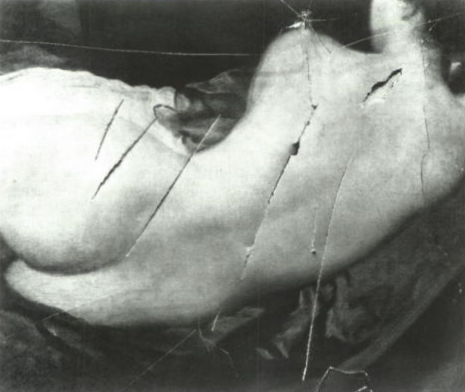
The slashed Rokeby Venus. Image via artinsociety.com.
Haunted Happenings: The Law of Ghosts and Home Sales
If the average Airbnb isn’t scary enough this season, consider visiting a house that’s actually haunted. More and more people are reporting ghosts in domestic settings – and not always friendly ones. Trouble ensues when the place the ghost calls home is up for sale. Lawyers may be faced with the question: is a ghostly presence a condition that must be disclosed prior to sale? Would a reasonable family purchase a house that comes with a frightening ghost? Read more here to discover the actual laws that govern when a family’s new home comes with an unexpected side of ghost.
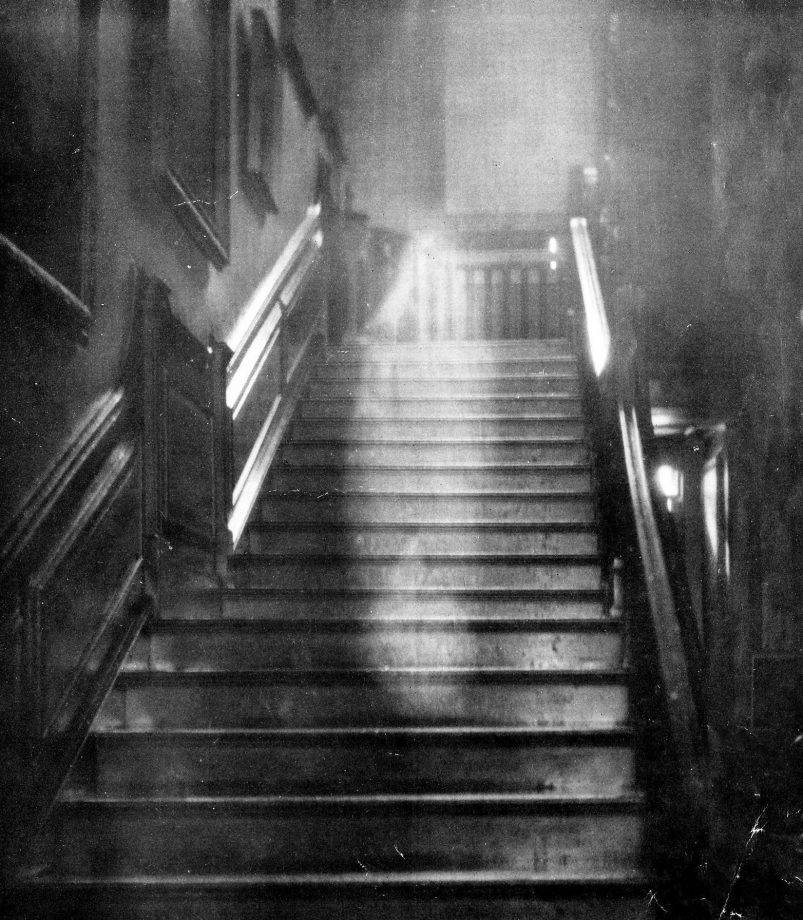
Famous ghost photograph of the Brown Lady of Raynham Hall, originally taken for Country Life (first published in December 1936).
Horrifying Provenance of Monster Manuscripts
This post provides two monstrous holiday destinations in one spooky swoop: ties to Mary Wollstonecraft Shelley’s Frankenstein can be found in both New York City and Oxford, England. Online versions of Shelley’s copious notes and edits for the story can be found on The Shelley-Godwin Archive’s website through the New York Public Library. To pay a visit to the originals, travel to Oxford, where the original transcript are held as part of the Abinger Collection in the Bodleian Library. If that weren’t reason enough to visit Oxford this time of year, stop by Christ Church College for the Harry Potter-esque tour of the storied grounds. Glimpse the inspiration for the wizarding world’s tall towers and cavernous halls on the college campus. Who knows – wizards also might be walking the grounds, masked in their muggle clothes.
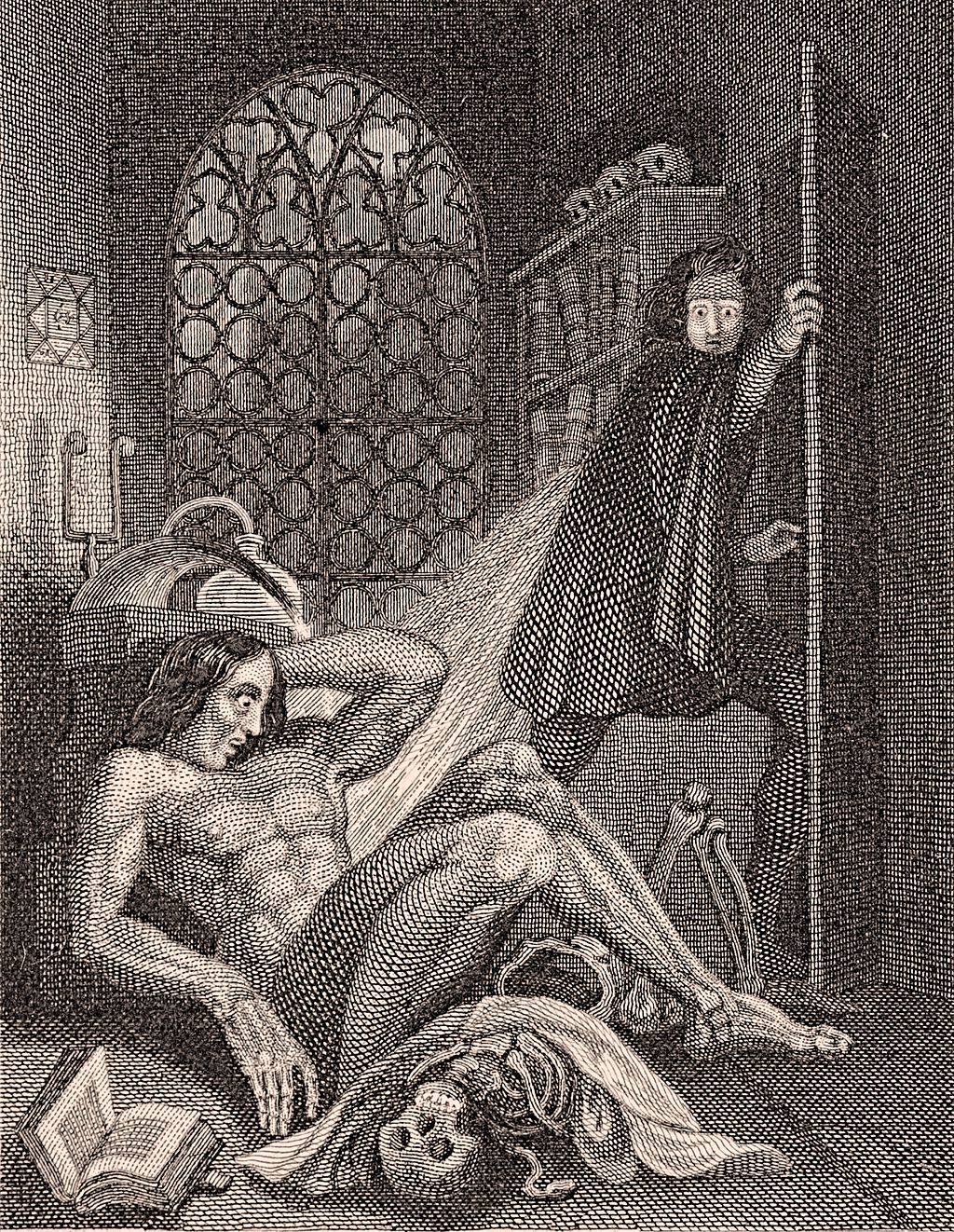
Illustration from the frontispiece of the 1831 revised edition of Frankenstein, published by Colburn and Bentley, London 1831.
The Cat’s Meow: Feline Art Lovers
Word on the street is that the husband of our firm’s founder is dressing as a cat for the second consecutive year this Halloween. While we can neither confirm nor deny the Halloween costumes of our firm’s families (or whether or not, in fact, the members of those families were given the freedom to select their own costumes, or if they were selected for them by their young daughters), click here for a post inspired by our culture’s love for cats in art. Thinking of dressing as a cat this year? As our founder’s husband may say, ‘tis the season!
On behalf of Amineddoleh & Associates, we wish you a safe and Happy Halloween this year!
by Amineddoleh & Associates LLC | Sep 29, 2023 |
 Our founder, Leila Amineddoleh, has recently been featured in New York Metro Super Lawyers Magazine, alongside other leaders in her field. Leila was chosen for the piece as a top-rated intellectual property, art, and cultural heritage lawyer well-known in the industry for getting the job done right. This means advocating both for her clients, and for the art and cultural heritage at issue.
Our founder, Leila Amineddoleh, has recently been featured in New York Metro Super Lawyers Magazine, alongside other leaders in her field. Leila was chosen for the piece as a top-rated intellectual property, art, and cultural heritage lawyer well-known in the industry for getting the job done right. This means advocating both for her clients, and for the art and cultural heritage at issue.
In the article, Leila’s experience working with our former client (and now current friend) Laura Young, is highlighted. Young is our client who found an Ancient Roman marble bust at her local Goodwill in Austin, TX. Our firm has written previously about Leila’s and Laura’s story. Read the incredible journey one Roman bust took from Germany to Texas (and how he found his way home) here.
In the piece by Super Lawyers, Leila’s success working with Laura is illustrative of her signature manner taking care of her clients by providing insight on best practices in the art law field. In Leila’s words, her work as a lawyer requires giving this special level of attention. She says it can require coming up with “creative solutions . . . . As a lawyer, you find out what’s important to someone.”
Later in the article, Leila gives her thoughts on changing attitudes on lawsuits involving stolen antiquities. She connects the rise of modern lawsuits brought by claimants for contested works to a 1995 international investigation in Italy. That investigation exposed many thought-to-be honest dealers as thieves, and revealed and auction houses to be engaging in deceptive practices. Leila explains how the impact of this investigation continues to call objects held by museums, collectors and auction houses into question, leading to an on-going return of hundreds of objects and works of art.
Leila’s success has launched her and her namesake firm to even greater heights. It is an honor to be featured alongside other esteemed colleagues this stand-alone piece. In it, Leila and her colleagues give important guidance on the current industry challenges for art lawyers. Read the piece here.
by Amineddoleh & Associates LLC | Jan 26, 2023 |

Madonna in concert in 2005. Credit: David Cushing, https://www.flickr.com/
Madonna, singer of “Vogue” fame, has been asked to negotiate a loan of an 1822 Jerome-Martin Langlois painting from her personal art collection. The mayor of Amiens requested that the singer loan the work to the Musée de Picardie in the French city. The painting was purchased by Madonna in 1989 at auction, around the time that the singer’s fourth studio album was released. Decades later, in 2015, a museum curator recognized the painting after Madonna was featured in an issue of the weekly publication Paris Match Magazine. The article included a photograph of the “Material Girl” in her home, with the painting visible in the background.
When the curator examined the subject matter of the painting in the photo – a small Cupid in flight dashing between Roman mythological figures Diana and Endymion – a match was made. The painting looked remarkably similar to a work once owned by the Musée de Picardie and thought to have been destroyed by World War I bombings. Further inquiry revealed that the painting once thought lost is very likely the work hanging in Madonna’s home.
Notably, the city of Amiens has not accused Madonna of any wrongdoing, and it is not demanding the restitution of the work. Rather, the city has requested a loan. Such a deal could be fortuitous for both Madonna and the city of Amiens. Madonna would keep the painting in her private collection following the loan, and Amiens could display the painting in its original glory. Moreover, Amiens would no doubt benefit from the added publicity of a loan from such an A-list celebrity. This would be particularly timely for the city, coincidentally gunning to be named the Cultural Capital of Europe in 2028. (Amiens, among other cities such as Brovmov in the Czech Republic and Skopje in North Macedonia, are on the most recent short list for the recognition).
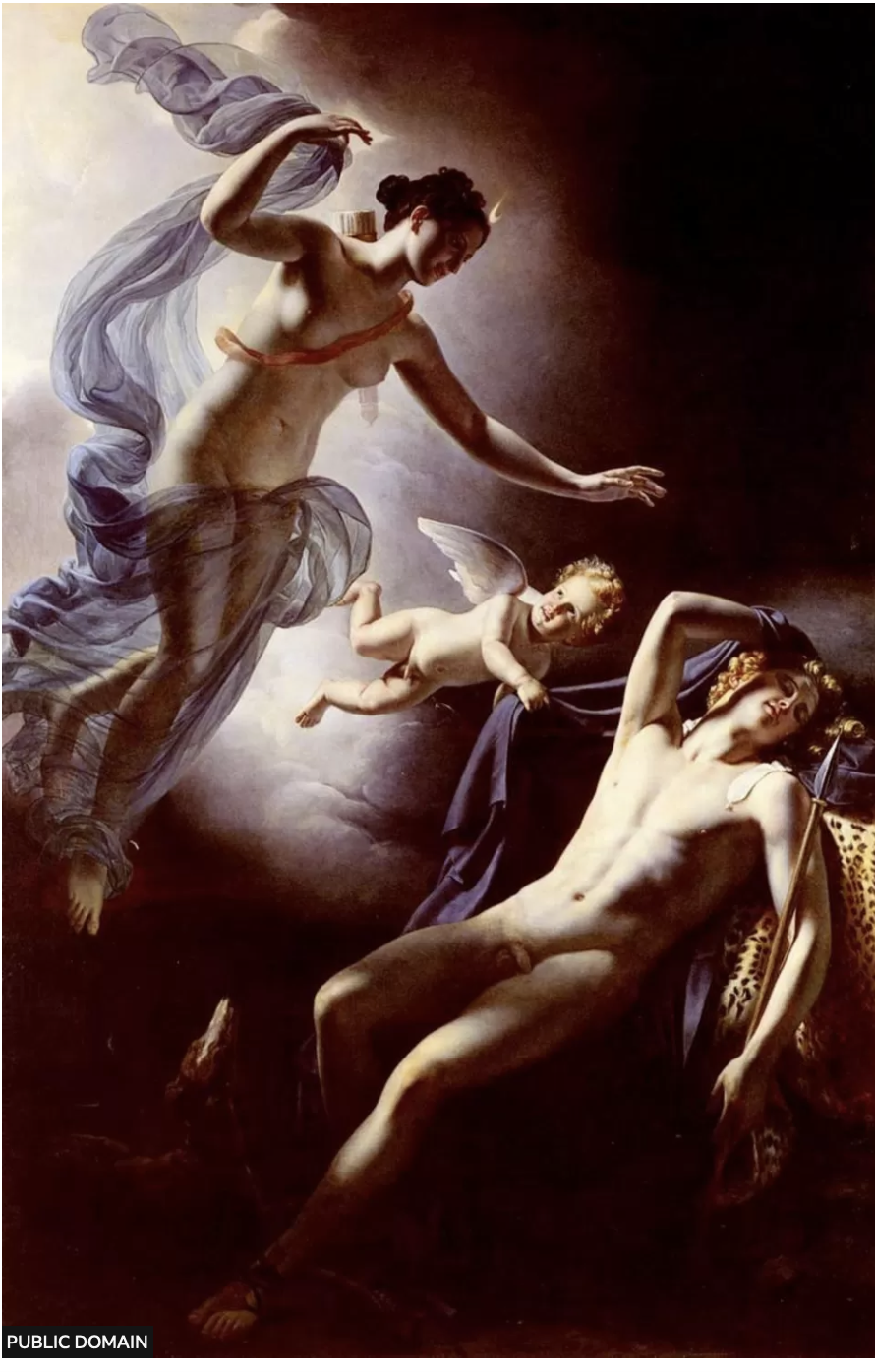
Diana and Endymion, Jérôme-Martin Langlois, 1822, Credit: Public Domain
Madonna has yet to respond to the loan request. Her decision whether to accept or reject the offer to negotiate might be influenced (hopefully, positively) by certain outcomes of other high-profile celebrities who have faced ownership claims against artwork held in their personal collections.
Other Celebrities With Problematic Art
One path for some has been to return the work outright. As we discussed previously, Nicolas Cage returned a dinosaur skull he bought at auction once it was established that it had been illegally excavated. Another 80s icon, Boy George, was keen to return a contested piece to its claimant owner. In 2011, the stylish singer returned an icon to Cyprus, to later be reinstalled in the Church of St. Charalambos. The church’s bishop saw the icon in the background of a video interview filmed in Boy George’s home. He recognized the piece as one stolen from the church following Turkish invasion in 1974. Boy George’s graciousness in returning the piece is heartening (he went on record as “happy [to see] the icon going back to its original home.”
Another path forward for celebrities with problematic artwork is to negotiate in good faith with the claimants, in lieu of lengthy and costly litigation. Take, for example, a piece put up for auction by the stewards of the late Gianni Versace’s private art collection. In 2010, a painting that once hung in Versace’s Lake Como villa was consigned for auction at Sotheby’s in London. The listing, a portrait by Johann Zoffany entitled Portrait of Major George Maule caught the eyes of the direct descendants of the painting’s owner. The descendants contacted the Art Loss Register, who negotiated with Sotheby’s. After what was reported as an amicable mediation, the piece was pulled from auction. The work was returned to its original owners, who were “overjoyed” to be able to hang the painting from their own walls.

Van Gogh’s Vue de l’Asile et de la Chapelle de Saint-Remy, gracing the catalog cover for the sale of Elizabeth Taylor’s collection (Credit: Christie’s LLC)
Negotiating has also proven to be a feasible and mutually beneficial option for the Andrew Llyod Webber Art Foundation. After the Foundation put up a Picasso for auction at Sotheby’s in London, heirs of a Jewish family claimed that the work was sold under duress to the Nazi Party by their ancestor. In 2010, the parties reached an agreement of undisclosed terms (and, as the painting is valued at over $60 million, a substantial award was likely given to the family). Following the negotiations, the family willingly relinquished all ownership claims of the work, and seemingly walked away content with their end of the bargain.
However, some celebrities – either with the budget for litigation or incredibly personal ties to the contested work at issue (or both) – are willing to fight in court. Elizabeth Taylor is one example. She defended herself in litigation after she was contacted about a piece in her personal art collection in 2004. The 1889 work, a Van Gogh painting entitled View of the Asylum and Chapel at Saint Remy, was sold at auction to the actress at Sotheby’s in London in 1963. Decades later, descendants of a Jewish woman named Margarete Mauthner claimed that the painting was rightfully theirs. They asserted that it had been sold by their ancestor under duress by Nazis. The Orkin family sought redress under the 1998 U.S. Holocaust Victims Act, but was barred from recovery due to the statute of limitations. The 9th Circuit upheld the lower court ruling that the Orkin family had missed their chance to claim ownership, and Elizabeth Taylor kept her painting in her L.A. residence.

Amiens, France. Credit: Library of Congress, Prints and Photographs Collections, licensed via pingnews
Madonna’s Next Steps
Taylor’s unwillingness to relinquish ownership stands in contrast to the negotiations and settlement offers made by Versace and Andrew Llyod Webber’s Art Foundation. The potential for high-profile art buyers to avoid litigation and to instead reach amicable agreements presents a cooperative path forward and an overall more sustainable approach. These types of mediations, which may include the return of the work, give power and voice to claimants, without demonizing buyers who may have been unaware of the work’s problematic provenance. (This is particularly important in the case of celebrity buyers, who often work through intermediaries.) This ensures that justice is served, and that past traumas are recognized, while promoting the preservation and enjoyment of cultural heritage for generations to come.
The humanizing impact of high-profile celebrities who publicly acknowledge original ownership of a problematic work cannot be understated. When celebrities use their platform to give voice to people whose voices have been silenced, they set in motion healing work in the practicum of art and cultural heritage. What will Madonna do, moving forward? Perhaps she will be inspired to accept the loan offer and cooperate amicably with the City of Amiens.
After all, in the agreement put forth by Amiens, Madonna can still “keep her baby.”
.”
by Amineddoleh & Associates LLC | Jul 27, 2022 |
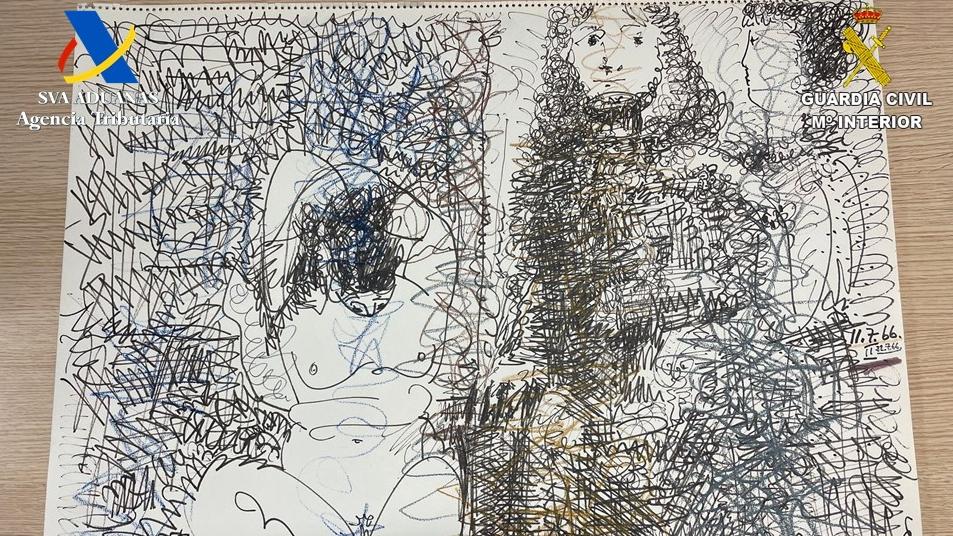 Last week, customs officials on the Spanish island of Ibiza discovered something a bit more exciting than the usual partygoers and tourists – a sketch by Pablo Picasso worth over $463,000. The sketch (Trois Personnages, 1966) was flown into Ibiza from Switzerland. It was found in a passenger’s suitcase after he failed to declare the contraband artwork. He attempted to pass off the original artwork as a print by presenting a falsified receipt listing its value as $1,550. Swiss customs officials noted that the work had been packed in a suspicious manner and alerted their Spanish counterparts. Once the plane arrived in Ibiza, customs officials approached the passenger. After being presented with the false receipt, the agents located another receipt at the bottom of the luggage revealing the supposed print’s true value. The sketch was quickly sent to an art expert, who confirmed its authenticity. The passenger now faces criminal charges of smuggling, failing to declare the value of the artwork, and presenting authorities with a false receipt. The sketch is in the custody of the Ibiza court overseeing the investigation.
Last week, customs officials on the Spanish island of Ibiza discovered something a bit more exciting than the usual partygoers and tourists – a sketch by Pablo Picasso worth over $463,000. The sketch (Trois Personnages, 1966) was flown into Ibiza from Switzerland. It was found in a passenger’s suitcase after he failed to declare the contraband artwork. He attempted to pass off the original artwork as a print by presenting a falsified receipt listing its value as $1,550. Swiss customs officials noted that the work had been packed in a suspicious manner and alerted their Spanish counterparts. Once the plane arrived in Ibiza, customs officials approached the passenger. After being presented with the false receipt, the agents located another receipt at the bottom of the luggage revealing the supposed print’s true value. The sketch was quickly sent to an art expert, who confirmed its authenticity. The passenger now faces criminal charges of smuggling, failing to declare the value of the artwork, and presenting authorities with a false receipt. The sketch is in the custody of the Ibiza court overseeing the investigation.
Yet this is not the first incident involving a smuggled Picasso in Spain. Jaime Botín, former chairman of Spanish bank Bankinter, was sentenced to 18 months in jail and received a $58 million fine (increased to $101 million) in 2020 after attempting to smuggle a painting by Picasso (Head of a Young Woman) out of the country aboard his private yacht. Botín had originally purchased the painting, worth $29 million, in London in 1977. He later planned to sell it at auction, but was unable to remove it from Spain. Christie’s London applied to the Spanish Ministry of Culture for an export permit in 2013 (on Botín’s behalf) but it was denied. The Ministry found that the artwork qualified as a national treasure since it was over 100 years old and the Ministry deemed it culturally significant. The painting is notable for being one of the few exemplars of Picasso’s Rose Period and presents various similarities with the figures in Les Demoiselles d’Avignon, one of the artist’s seminal works and a highlight of the Cubism movement. An art expert deemed the work unique and stated that it is highly unlikely that another painting with these characteristics exists in Spain – or Europe.
Botín was undeterred by the government’s pronouncement as he brazenly took it aboard his yacht, where he sailed to Corsica in 2015. French customs officials boarded the vessel and seized the painting at that time. It was suspected that Botín planned to take the work to Switzerland and sell it there. Botín claims that he was transferring the work abroad for safekeeping, and that he could do so as the legitimate owner of the painting. However, Spain’s patrimony law clearly prohibits the removal of national treasures from Spanish territory without the approval of the Ministry of Culture. The court’s imposition of a substantial fine is indicative of the seriousness with which Spain views attempts to circumvent its cultural heritage export ban; this is the first time a sentence of this magnitude has been imposed in a case involving artwork.
Head of a Young Woman is currently on view at the Reina Sofía Museum in Madrid, where it was transferred for safekeeping in 2015 after its seizure. It will feature in an upcoming exhibition to mark the 50th anniversary of Picasso’s death in 2023. Meanwhile, a court exempted Botín from serving his jail sentence due to illness and advanced age (85), although he ultimately paid the increased fine. He continues to maintain his innocence and stated that he hopes to display the painting at his family’s Centro Botín in Santander one day.
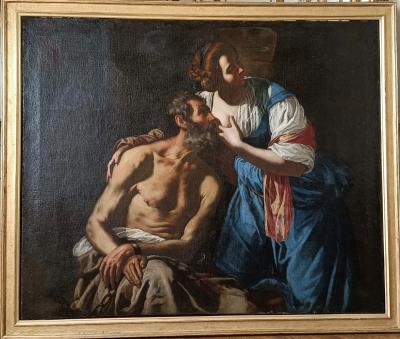 The problem with smuggled works is not unique to Spain. Just last week, it was reported that a 17th century painting by Artemisia Gentileschi was recovered after it was illegally exported from Italy. The work was recovered and repatriated from Austria to Bari. Two people are being investigated for fraud and illegal export of cultural goods. They disguised the attribution and concealed the historical importance of the work in order to obtain permission to export the painting out of Italy.
The problem with smuggled works is not unique to Spain. Just last week, it was reported that a 17th century painting by Artemisia Gentileschi was recovered after it was illegally exported from Italy. The work was recovered and repatriated from Austria to Bari. Two people are being investigated for fraud and illegal export of cultural goods. They disguised the attribution and concealed the historical importance of the work in order to obtain permission to export the painting out of Italy.








 Our founder, Leila Amineddoleh, has recently been featured in New York Metro Super Lawyers Magazine, alongside other leaders in her field. Leila was chosen for the piece as a top-rated intellectual property, art, and cultural heritage lawyer well-known in the industry for getting the job done right. This means advocating both for her clients, and for the art and cultural heritage at issue.
Our founder, Leila Amineddoleh, has recently been featured in New York Metro Super Lawyers Magazine, alongside other leaders in her field. Leila was chosen for the piece as a top-rated intellectual property, art, and cultural heritage lawyer well-known in the industry for getting the job done right. This means advocating both for her clients, and for the art and cultural heritage at issue.



 Last week, customs officials on the Spanish island of Ibiza discovered something a bit more exciting than the usual partygoers and tourists – a
Last week, customs officials on the Spanish island of Ibiza discovered something a bit more exciting than the usual partygoers and tourists – a  The problem with smuggled works is not unique to Spain. Just last week, it was reported that a 17th century painting by
The problem with smuggled works is not unique to Spain. Just last week, it was reported that a 17th century painting by